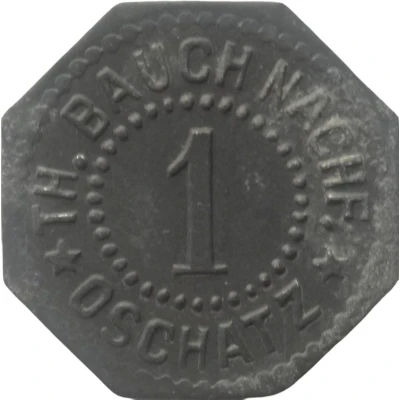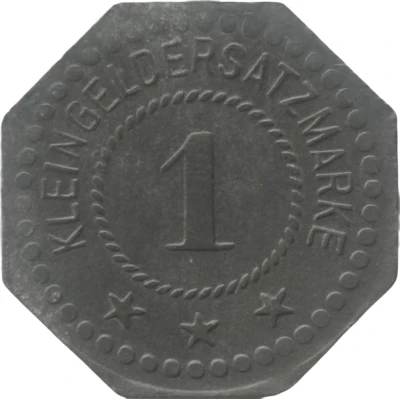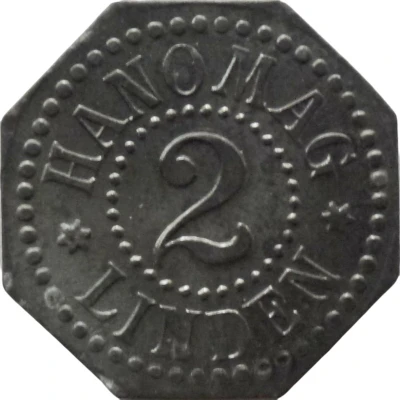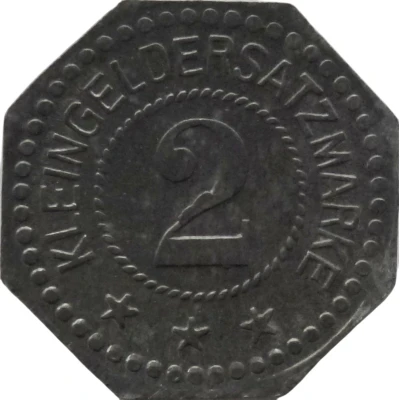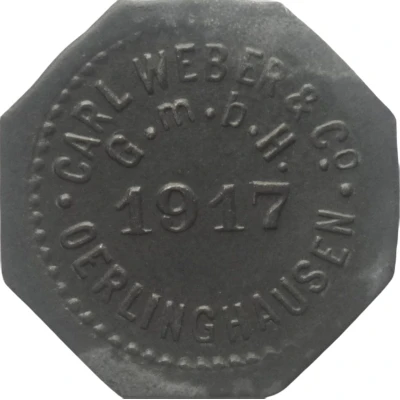
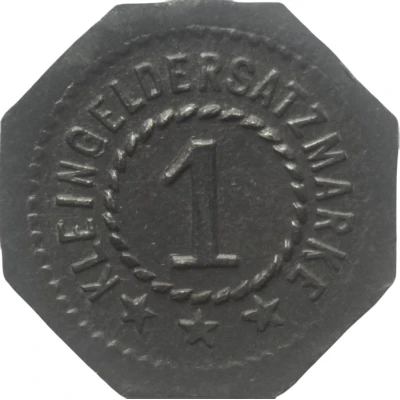

© Willem63 (CC BY-NC-SA)
1 Pfennig - Oerlinghausen Carl Weber and C° G.m.b.H.
1917 year| Zinc | 1.0 g | 16.2 mm |
| Issuer | German notgeld (Germany) |
|---|---|
| Emperor | William II (Wilhelm II) (1888-1918) |
| Type | Standard circulation coin |
| Year | 1917 |
| Value | 1 Pfennig (0.01) |
| Currency | Mark (1914-1924) |
| Composition | Zinc |
| Weight | 1.0 g |
| Diameter | 16.2 mm |
| Thickness | 0.8 mm |
| Shape | Octagonal (8-sided) |
| Technique | Milled |
| Orientation | Medal alignment ↑↑ |
| Demonetized | Yes |
| Updated | 2024-10-04 |
| Numista | N#349441 |
|---|---|
| Rarity index | 97% |
Reverse
Pearl rim, legend surrounding rope circle with denomination centered
Script: Latin
Lettering:
KLEINGELDERSATZMARKE
1
★★★
Edge
Plain
Comment
Menzel: BBBFa: Leinenweberei (Linen weaving)
Interesting fact
One interesting fact about the 1 Pfennig - Oerlinghausen (Carl Weber and C° G.m.b.H.) 1917 coin from German notgeld (Germany) made of Zinc weighing 1.0 g is that it was issued during a time of economic crisis in Germany, specifically during the hyperinflation period of the 1920s. The coin was part of a series of emergency coins minted by different cities and towns in Germany to address the shortage of small change caused by the inflation. The coin's design features the image of a woman holding a shield with the town's coat of arms, symbolizing the town's resilience and determination to overcome the economic challenges of the time.
